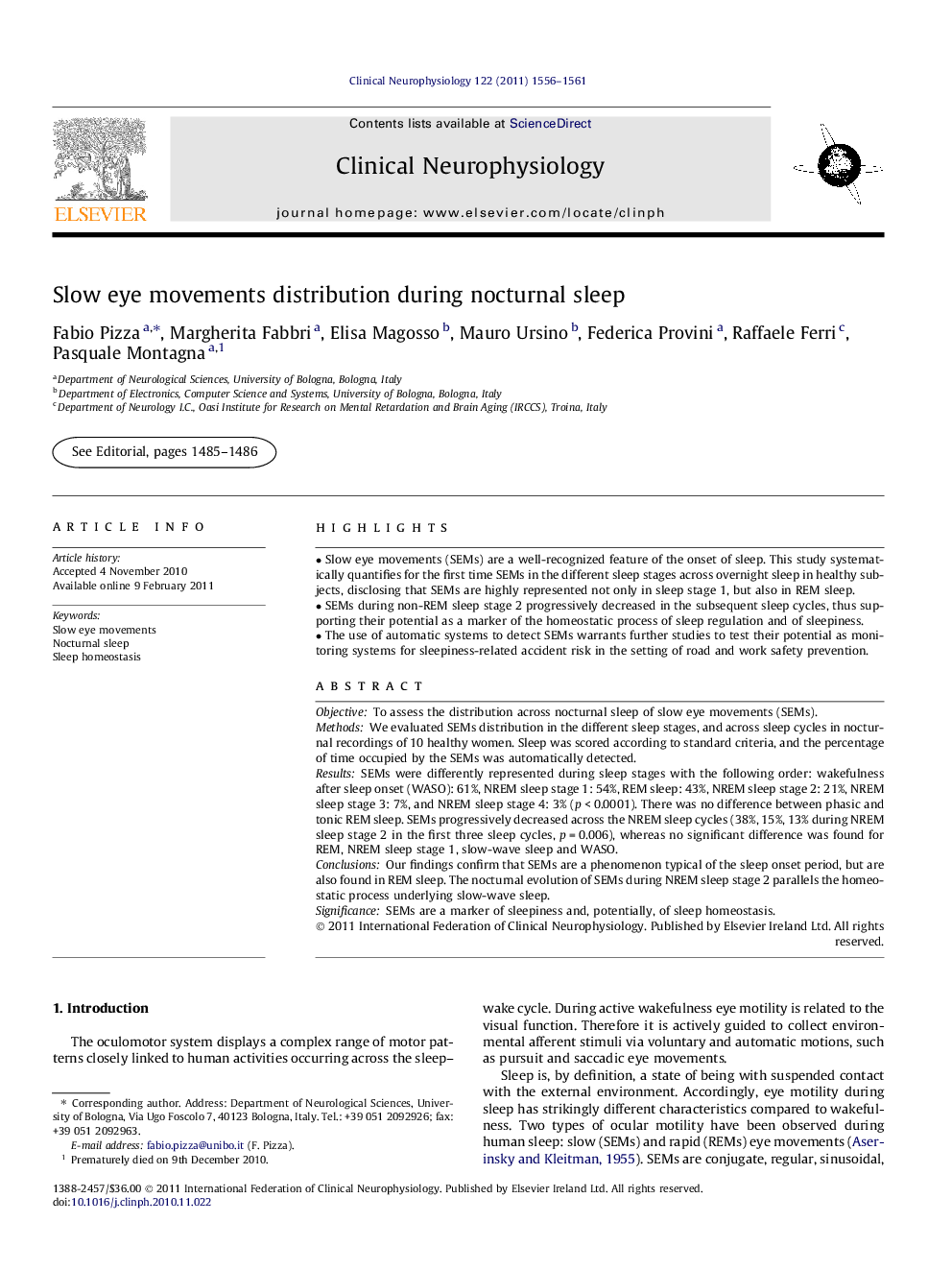| Article ID | Journal | Published Year | Pages | File Type |
|---|---|---|---|---|
| 3044019 | Clinical Neurophysiology | 2011 | 6 Pages |
ObjectiveTo assess the distribution across nocturnal sleep of slow eye movements (SEMs).MethodsWe evaluated SEMs distribution in the different sleep stages, and across sleep cycles in nocturnal recordings of 10 healthy women. Sleep was scored according to standard criteria, and the percentage of time occupied by the SEMs was automatically detected.ResultsSEMs were differently represented during sleep stages with the following order: wakefulness after sleep onset (WASO): 61%, NREM sleep stage 1: 54%, REM sleep: 43%, NREM sleep stage 2: 21%, NREM sleep stage 3: 7%, and NREM sleep stage 4: 3% (p < 0.0001). There was no difference between phasic and tonic REM sleep. SEMs progressively decreased across the NREM sleep cycles (38%, 15%, 13% during NREM sleep stage 2 in the first three sleep cycles, p = 0.006), whereas no significant difference was found for REM, NREM sleep stage 1, slow-wave sleep and WASO.ConclusionsOur findings confirm that SEMs are a phenomenon typical of the sleep onset period, but are also found in REM sleep. The nocturnal evolution of SEMs during NREM sleep stage 2 parallels the homeostatic process underlying slow-wave sleep.SignificanceSEMs are a marker of sleepiness and, potentially, of sleep homeostasis.
► Slow eye movements (SEMs) are a well-recognized feature of the onset of sleep. This study systematically quantifies for the first time SEMs in the different sleep stages across overnight sleep in healthy subjects, disclosing that SEMs are highly represented not only in sleep stage 1, but also in REM sleep. ► SEMs during non-REM sleep stage 2 progressively decreased in the subsequent sleep cycles, thus supporting their potential as a marker of the homeostatic process of sleep regulation and of sleepiness. ► The use of automatic systems to detect SEMs warrants further studies to test their potential as monitoring systems for sleepiness-related accident risk in the setting of road and work safety prevention.
